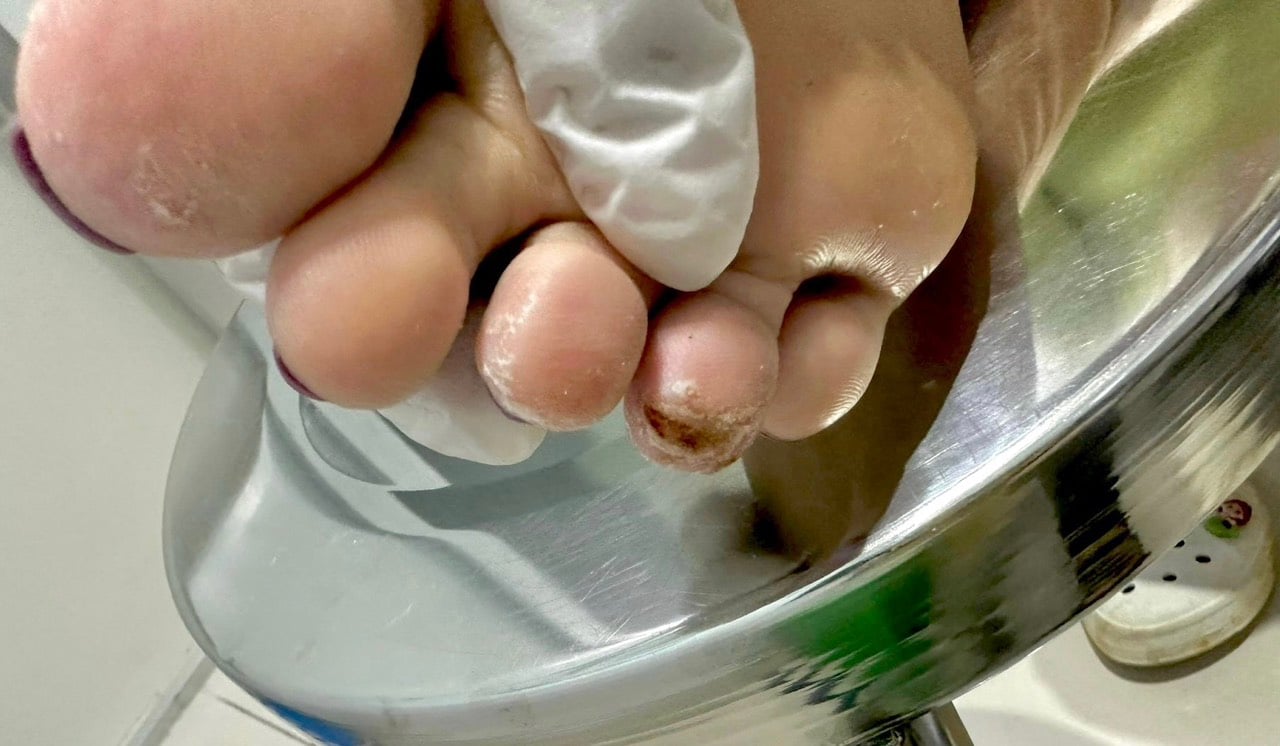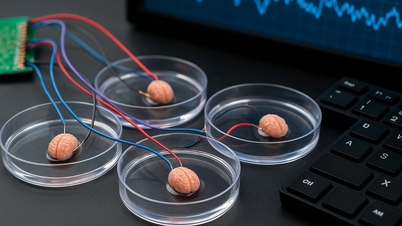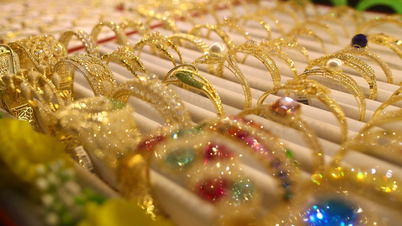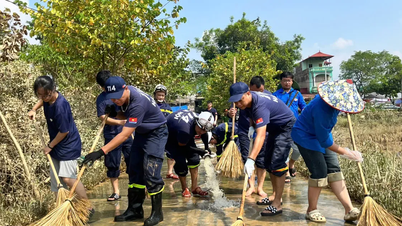Doctor Pham Anh Ngan, University of Medicine and Pharmacy Hospital, Ho Chi Minh City - Campus 3, said that fungi are parasitic organisms that thrive in hot and humid temperatures (27-35 degrees Celsius). During the rainy season, humid air, damp clothes... create favorable conditions for fungal diseases to develop.
Some common skin fungal diseases
According to Dr. Ngan, the rainy season often has some skin fungal diseases as follows.
Pityriasis versicolor : There are two forms, white and black, causing severe itching, especially when exposed to sunlight and sweating a lot.
Ringworm: Characterized by itching in the affected area, the skin has a slightly red streak, has a clear border and edge, and has small blisters on the edge. The fungal border tends to spread more and more, forming many arcs if not detected and treated promptly. When the patient itches and scratches, it will spread the ringworm to many areas on the body. The disease can spread through contact such as from animals (especially pets such as dogs and cats), shared items such as towels, blankets, pillows, clothes, etc. Therefore, it is necessary to use separate personal items to limit the spread.

A patient with athlete's foot came to the University of Medicine and Pharmacy Hospital, Ho Chi Minh City - branch 3 for examination.
Intertrigo : Common in people who work in contact with water such as sewer cleaners, farmers, seafood traders, etc. Especially in the rainy season, when in contact with dirty water flooded on the street, the risk of intertrigo infection also increases.
Nail fungus: When infected, the nail will lose its shine, be pushed up or recessed, the nail surface will be pitted or grooved, with powdery substance under the groove. The patient's nail will become increasingly rough, yellow or opaque. The disease can spread from one nail to another.

Rain and high humidity create favorable conditions for fungus to grow.
Preventing skin fungus
Dr. Le Vi Anh, Department of Dermatology - Dermatology, University of Medicine and Pharmacy Hospital, Ho Chi Minh City, said that the rainy season is the time when the number of cases of skin fungus-related diseases such as athlete's foot, nail fungus increases... The disease is characterized by red patches of skin, blisters, discharge, peeling skin, and itchy skin. To treat skin fungus, antifungal and antiseptic drugs are often used, topical medications if mild and oral medications if severe...
To prevent fungal infections, Dr. Vi Anh recommends that people pay attention to keeping their clothes and shoes dry and cool. After wading in dirty water, wash your hands and feet with soap and clean water, and dry them. Wear socks made of natural fabrics or fabrics that dry quickly or absorb moisture from the skin. In addition, remember to change your socks daily and more often when they get wet.
When you discover itchy skin and red dots spreading in an arc shape, you should consult a specialist for appropriate topical medication to avoid spreading to other areas of the body.
Some antifungal remedies from traditional medicine
Doctor Ngan shared that according to traditional medicine, some northern and southern medicinal herbs, when used externally, are effective in treating fungal diseases such as:
Rhubarb (Rhizoma Rhei) 10 g, vinegar 5 ml, alcohol 50 ml. Soak for 10 days, take out and apply on cleaned ringworm.
Cassia bracteata L. is used externally regardless of dosage. Folk experience often uses Cassia bracteata leaves to treat ringworm and scabies. Usually, wash clean, boil to mix with bath water or soak in the infected area, then dry.
Cassia tora L. for external use: 20g Cassia tora, 40-50ml alcohol, 5ml vinegar, soak for 10 days, apply to the cleaned fungal infection.
Rhinacanthus nasuta L., also known as white crane, is used by many people to treat skin diseases such as impetigo, eczema, skin fungus, etc. Use fresh or dried roots, crush them, soak in alcohol or vinegar for 7-10 days, wash the ringworm and apply the medicine.
Source link






![[Photo] Discover unique experiences at the first World Cultural Festival](https://vphoto.vietnam.vn/thumb/1200x675/vietnam/resource/IMAGE/2025/10/11/1760198064937_le-hoi-van-hoa-4199-3623-jpg.webp)































![[Photo] General Secretary attends the parade to celebrate the 80th anniversary of the founding of the Korean Workers' Party](https://vphoto.vietnam.vn/thumb/1200x675/vietnam/resource/IMAGE/2025/10/11/1760150039564_vna-potal-tong-bi-thu-du-le-duyet-binh-ky-niem-80-nam-thanh-lap-dang-lao-dong-trieu-tien-8331994-jpg.webp)






































































Comment (0)